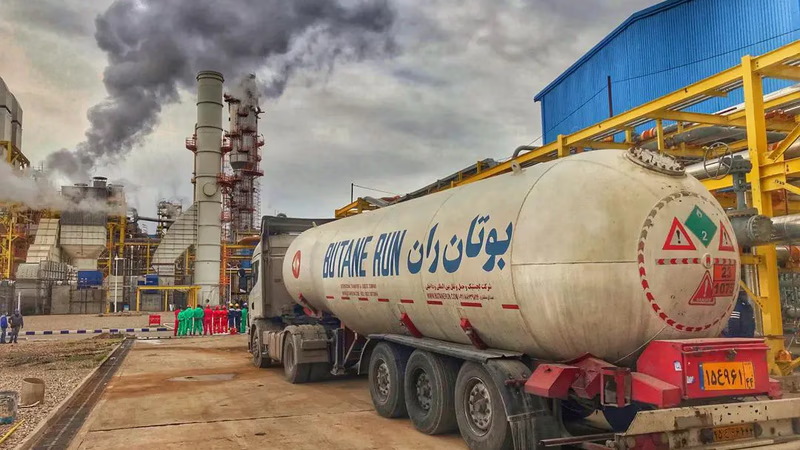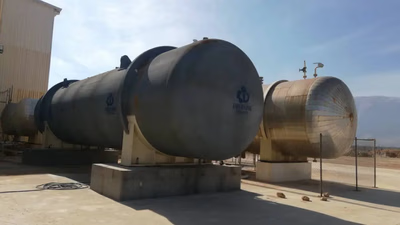
Ammonia"s role in agriculture and industry is crucial. "
Although ammonia was not known as a distinct compound, it has been used by humans since ancient times. People encountered ammonia in various forms, such as the vapor from animal waste and decomposing organic matter. They were aware of its pungent odor and irritant properties. During the alchemical period, which spanned from ancient times to the Middle Ages, ammonia-like substances were studied. Alchemists referred to these substances as \"spirits of hartshorn\" or \"volatile alkali.\" They were obtained by heating nitrogen-containing substances like animal horns, hooves, and urine. However, ammonia itself was not isolated as a pure compound during this period.
The isolation of ammonia as a distinct compound occurred in the 18th century. In 1774, Swedish chemist Carl Wilhelm Scheele obtained a colorless gas by heating sal ammoniac (ammonium chloride) with an alkali. He referred to the gas as \"alkaline air.\" Scheele recognized its distinct properties, including its ability to dissolve in water and produce an alkaline solution. The gas obtained by Scheele was further studied by other scientists, including English chemist Joseph Priestley and French chemist Claude Louis Berthollet. In 1782, French chemist Antoine Lavoisier named the gas \"ammonia\" after the Egyptian deity Amun, since it was commonly found in animal waste and was associated with the strong smell of urine.
Following the development of the Haber-Bosch process, ammonia production rapidly expanded. Ammonia became a key component in the production of nitrogen-based fertilizers, contributing to increased agricultural yields and food production. Additionally, ammonia found applications in various industries, including chemicals, refrigeration, cleaning products, and more.
The ancient Romans used ammonium chloride as money and deposits. They collected ammonium ore from a place called the Temple of Jupiter, or New Libya. But ammonia in the form of ammonia salt was first known by Jabir Ibn Hayyan in the 8th century. Ammonia is one of the largest synthetic products first obtained by Priestley in 1773 from heating chlorine and ammonium with lime. Later, in 1784, Bertolt discovered further research into the chemical formula and properties of ammonia. There are several methods for producing ammonia. In China, for example, ammonia is produced from coal, but it can be said that in most countries of the world, natural gas is considered as feed for ammonia units.
In 1900, Fritz Hobber investigated the ammonia balance at atmospheric pressure and obtained very low concentrations of ammonia (0.012%) at about 1000 ° C. Apart from Haber, Ostward and Nernst also studied the problems of ammonia synthesis separately and more closely; But a number of mistakes occurred during the research process. Ostward, for example, rejected the use of iron as a previously recorded ammonia synthesis catalyst due to an error in the experiment. Haber measurements at different atmospheric pressures indicated that higher pressures should be applied.
The industrial production of ammonia began in the 19th century. In 1823, British chemist Sir Humphry Davy developed a method to produce ammonia by passing an electric current through a mixture of nitrogen and hydrogen gases. However, this process was not efficient for large-scale production. The breakthrough in large-scale ammonia production came with the development of the Haber-Bosch process. In the early 20th century, German chemists Fritz Haber and Carl Bosch developed a catalytic process to synthesize ammonia from nitrogen and hydrogen gases under high pressure and temperature. This process, patented in 1910, revolutionized ammonia production and made it economically viable for industrial use.
-

Ammonia is crucial in various sectors, primarily as a nitrogen source for fertilizers, enhancing agricultural productivity through the Haber-Bosch process. It is also a key precursor in producing industrial chemicals like nitric acid and hydrogen cyanide, which are essential for manufacturing plastics and pharmaceuticals. In refrigeration, ammonia"s efficiency makes it a preferred choice for large-scale cooling systems. Additionally, it serves as an effective cleaning agent in household products and plays a significant role in metal surface treatment. Ammonia"s potential as a renewable energy source is gaining attention due to its high hydrogen content, making it suitable for fuel cells. Furthermore, ammonia is vital in water treatment processes for pH control and disinfection. Its historical significance is notable; the mass production of ammonia has significantly impacted global food security by preventing starvation for billions. However, its production also raises environmental concerns due to pollution.
-

Ammonia has been utilized since ancient times, initially recognized in various forms such as vapors from animal waste. Its distinct properties were studied during the alchemical period, where it was referred to as "spirits of hartshorn. " The isolation of ammonia as a pure compound occurred in the 18th century when Carl Wilhelm Scheele obtained a colorless gas from heating sal ammoniac. Antoine Lavoisier later named it "ammonia" in 1782. The development of the Haber-Bosch process in the early 20th century marked a significant advancement, allowing for large-scale production of ammonia from nitrogen and hydrogen gases. This innovation made ammonia essential for producing nitrogen-based fertilizers, significantly boosting agricultural yields. Ammonia"s applications extend beyond agriculture to industries such as chemicals and refrigeration. Historical uses include its role as currency in ancient Rome and its early identification by Jabir Ibn Hayyan in the 8th century.
Various production methods exist globally, with natural gas being the primary feedstock for ammonia synthesis today. "
-

West Asia, particularly countries like Saudi Arabia, Qatar, Iran, and the UAE, has emerged as a key player in ammonia production. These nations have heavily invested in infrastructure to support large-scale ammonia facilities, primarily utilizing natural gas as feedstock due to the region"s abundant reserves. The production process involves steam methane reforming, where methane is converted into hydrogen and then combined with nitrogen to create ammonia. While this industry contributes significantly to economic growth and diversification, it also raises environmental concerns due to greenhouse gas emissions associated with traditional production methods. Efforts are underway to adopt cleaner technologies such as renewable energy sources and carbon capture systems. The Middle East produces over 15 million tons of ammonia annually, with a substantial portion exported to global markets in Asia, Europe, and Africa. Saudi Arabia leads production capacity at 3. 5 million tons, followed closely by Iran and Qatar.
The integration of ammonia production with downstream industries like urea manufacturing enhances the region"s competitiveness in the fertilizer market. As global demand for chemical fertilizers rises due to population growth, West Asian countries are well-positioned to meet this need while exploring sustainable practices.
-

Ammonia (NH3) is a colorless gas composed of nitrogen and hydrogen, known for its pungent odor and high solubility in water. It is produced primarily through the Haber-Bosch process, which combines nitrogen and hydrogen under specific conditions. Ammonia has diverse applications, including use as a cleaning agent, in fertilizers, and as a precursor for various chemicals such as plastics and pharmaceuticals. Its role in agriculture is significant, providing essential nitrogen for plant growth. However, ammonia must be handled with care due to its toxic nature; inhalation can lead to respiratory issues and irritation. Environmental concerns arise from improper disposal or excessive release into water bodies, which can harm aquatic life. Ammonia also serves as a refrigerant due to its efficient heat transfer properties and is increasingly recognized as a potential alternative energy source due to its high energy density. The compound"s versatility makes it integral to multiple industries while necessitating strict safety measures during handling. "




